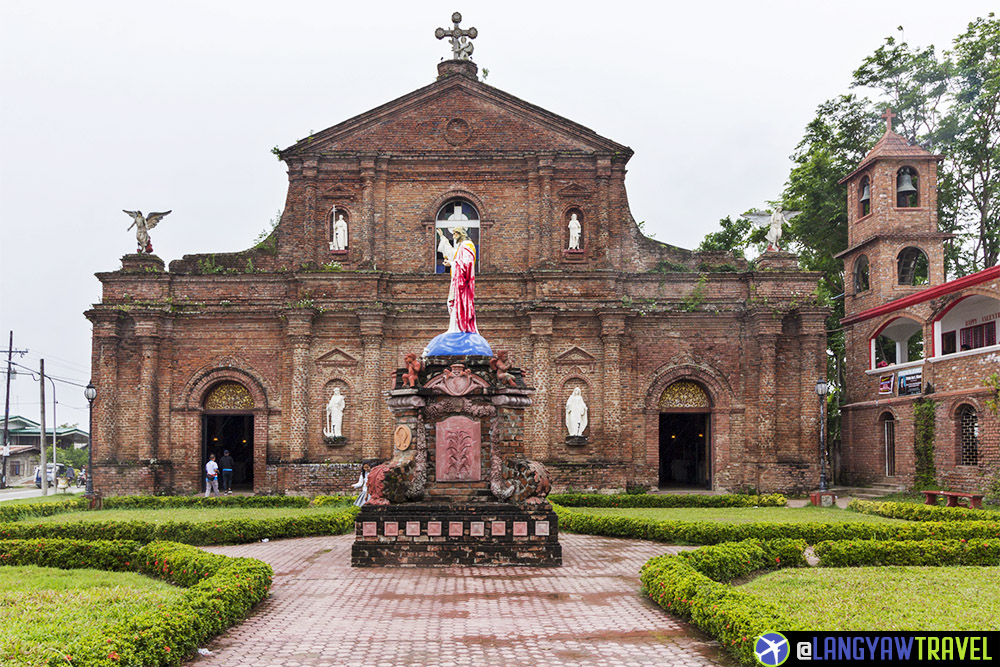I no longer know how many times I’ve visited Cagayan province ever since I first set foot on June 2005. For more than a decade, there’s always something to experience and learn everytime I’m there despite the long bus rides. I’ve marveled at its religious heritage, admired its natural wonders, and enjoyed its culinary offerings. And always, in my mind, I ask myself, when I should go back, especially if I’m craving for pansit batil patung.

A rich religious heritage
The Spaniards first arrived in northern Philippines in 1581. They sent an expeditionary group to explore the Cagayan Valley. But it was in 1594 when the Dominican Order started its evangelization resulting in the building of churches with bricks coming from the massive hornos (ovens) in Tuguegarao and Camalaniugan. And thus, one of the provinces worthy of a visita iglesia.
The massive façade and tall belfry make the Cathedral of Tuguegarao stand out. Although renovations removed some façade details, restorers brought its retablos back to their original design. In the same city, the quaint Ermita de San Jacinto captivates with its unique façade.

In the municipality of Alcala, the St. Philomene Church is the widest in the region while the town of Iguig is known for the flying buttresses of its heritage church. But what makes this an unforgettable church is the sweeping vista of the Cagayan River meandering the lowlands while life sized stations of the cross at its grounds is a popular Lenten destination.
The town of Piat is the top pilgrimage town in the province with the miraculous image of the Virgin Mary drawing thousands of pilgrims from all walks of life. Up north, Camalaniugan proudly showcases the Sta. Maria—the oldest bell in the Philippines, cast in 1595. Lallo on the other hand used to be the seat of the Diocese of Nueva Segovia in the 16th century before it was transferred to Vigan but the old church continues to face the ever encroaching Cagayan River.

Caves, beaches and Palaui Island
Cagayan province has so many untamed places. Callao Cave and to some extent, Sierra Cave, draw visitors for more than just spelunking. These caves sit within the Penablanca Protected Landscapes and Seascapes, the largest natural reserve in Cagayan province.And it is also here that the oldest man in the country has been found, predating Tabon Man by 17,000 years. The pristine Pinacanauan River is also ideal for kayaking and swimming while at one part of the river is an ideal spot for the circadian flight of bats.
Up the northeastern coast is the Anguib Beach which is becoming a popular destination although, now, you can only reach it by pumpboats. Talisay trees line the beach while a walk of snipes are busy feeding at the water’s edge. They served us a feast of seafood, including lobsters!
But it is magical Palaui Island that takes one’s breath away, a very remote spot in Cagayan Province. It’s rugged, with steep hills and cliffs jutting out from the water. It’s thick with forests teeming with unique flora and fauna and lonely coves strewn with dead corals, smoothened pebbles and fine sand. At Cape Engno, the ruins of a Spanish colonial era lighthouse stands forlorn, overlooking the often rough and choppy seas. It’s a short trek up this structure but the views are amazing.

Sweets, garlic longanisa and pansit
Cagayan province is also garlic longanisa country, almost similar to those in the Ilocos but varying in size, and amount of garlic and spices. Municipal variations abound, of which, two are prominent: the one from Tuguegarao and the other from Claveria. Pasalubong? There’s the milk candy, popularized in Alcala and some versions like the one in Lallo and airy and crispy Chicha-rabao, banana chips as well as cassava and rice fritters. Piat also has its pawa, ground sticky rice filled with a mixture of sugar and ground nuts.
My favorite regional noodle dish is none other than the pansit batul patung. It’s proudly Cagayan that is delectable, sumptuous and filling. Many times that I’ve dreamed or pined for this that once, I hopped on a bus all the way to Tuguegarao just to indulge on this heavenly dish. Cooks stir-fry local miki noodles with liver and carabeef, then mix in chopped onions, vinegar, and chili peppers. They traditionally top the dish with a raw egg to cook in the heat. A cup of hot broth adds a savory touch as an appetizer.
And more to discover.
Getting to Cagayan Province
Tuguegarao City is the capital of Cagayan province and is reached thru buses from Metro Manila, Baguio and Laoag. There are also daily flights from Metro Manila by Philippine Airlines and Cebu Pacific.

Comments are closed.